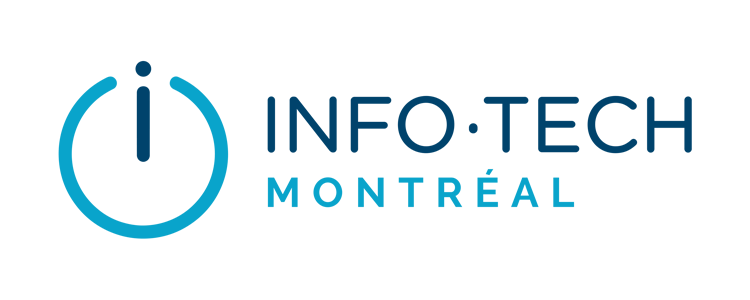The Importance of a Network Security Assessment
Are you really aware of what is circulating on your network? Most companies can only partially see the devices connected to the network and their activities, leaving them unaware of the security risks.
With everything going on in the world today, it’s no surprise that cybersecurity is a top priority for every IT department. Cyber-attacks against businesses are widespread and destructive.
Customers now have zero tolerance for data breaches. If an attack occurs and their personal information is exposed, they will not hesitate to find another company to work with. Now is the best time to review your security status, and make adjustments to your plan.
Current Threat Environment
A threat is a potential breach that affects the confidentiality, availability or integrity of a resource. Threats can include disclosure of sensitive data, falsification of data, and even denial of access to services.
The current threat environment consists of information about threats, malicious actors and threat vectors, from which attacks can occur.
Malicious actors are individuals or groups who seek to cause damage via existing threats. For example, in the case of laptop theft, the malicious actor is the thief. A threat vector is a path that allows an attack. For example, the door is left open or the laptop is not attached to the table.
What is a safety assessment?
A safety assessment can take many forms. In general, a security assessment is a technical review of your technological systems, physical security, and rules, where IT security experts look for vulnerabilities and weaknesses that could lead to a security incident. Security assessments may vary depending on who is conducting them, and your business objectives for the assessment.
Why is it important to secure an internal network?
Networks are one of the main targets of attacks because they rarely incorporate security risk considerations into their design. Network security is an important issue for businesses. Indeed, the increasing importance of computer resources, the interconnection of information systems, and their disclosure, increase the risk of attacks.
At the same time, information (data) is generated, exchanged and processed by systems and networks that may be vulnerable to any level of component or configuration, including servers, workstations, segmentation, Wi-Fi, user access and applications.
The basics
In order to protect your computer network, it is important to have good protection tools, such as antivirus software, firewalls and anti-spam software. To protect your network, you must allow your employees to adopt best practices such as:
- Using complex passwords
- Not opening attachments: unknown or uncontrolled files
- Avoid connecting to compromised websites.
Using a VPN can help. It is important to understand the key concepts related to network security. Without knowing the vulnerabilities and malicious actors, it is difficult to know which security controls are the best to implement.
For example, you need to understand that your identity must be verified before you can access our system. This is basic knowledge to identify the right suppliers and solutions.
Access control
Access control is a type of security control that most people are familiar with. Today, most people use passwords to connect to their computers. You may have done it yourself a few minutes ago. A password may have been used to access a network, application or file. On average, a person must keep track of 10 passwords. The implementation of access control is divided into four parts: identification, authentication, authorization and liability.
This process uses unique identifiers such as user IDs, usernames and account numbers to verify your identity. The system authenticates a user’s identity by verifying the user’s known identifiers, such as username and password. It may also be in your possession, such as an ID card or a one-time password. Authorization is the process of granting authorizations after the system has validated the user.
The last part, responsibility, deals with the monitoring of user activity and the accountability of users to whom access is granted for their actions on the system. Passwords are not the only option anymore. There are many options, including one-time passwords, smart cards, and devices and software that generate biometric data. Particular attention should be paid to the choice of the appropriate option for each network resource.
Vulnerabilities
An exploitable vulnerability must exist for a threat to occur. A vulnerability can be used by a malicious actor to violate your security policy.
Going back to the laptop example, lightweight design, portability and convenience are features that attract many customers. At the same time, the same characteristic is a weak point that increases the risk of theft. Security controls such as door and cable locks slow down malicious actors, reduce the likelihood of theft, and reduce the overall risk.
Prevent, detect, Solve
Confidentiality, integrity and availability are the key attributes that define the objectives of any information security process. This process involves many strategies and activities. Each is in one of three phases: prevention, detection and remediation. The pillars of the prevention phase are:
- Define the elements to be protected
- Define organizational responsibilities
- Establishment of implementation procedures
- Application Details
- Create a security awareness program to train all employees
- Establish access controls to manage how employees access and use company resources
Why carry out this analysis?
Network security is constantly evolving. There will be new threats and vulnerabilities, new uses, evolving segmentation, and much more. Effective network security management requires comprehensive knowledge of the network environment.
All threats must be assessed on a regular basis to determine relative risk.
From there, you can effectively manage priorities and resources to address these risks, improve security, and prevent attacks and business interruptions. This scan is a quick and easy way to view applications, threats and vulnerabilities on your network.
At Info-Tech Montreal, we have decades of IT and cybersecurity expertise protecting and serving businesses in and around Montreal. We understand that true IT security goes beyond installing firewalls or antivirus software; it starts with visibility and ends with actionable insight. Our approach combines deep technical analysis with practical, business-aware recommendations tailored to your specific environment. Whether you’re a growing business or managing complex IT systems, learn what’s on your network by getting a security audit.




